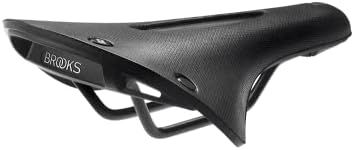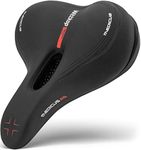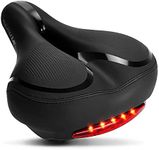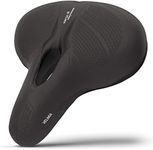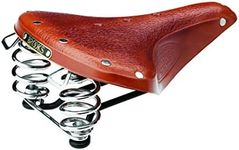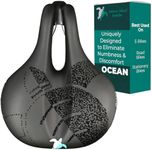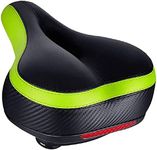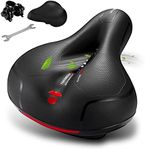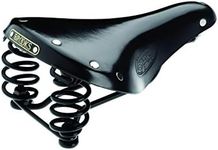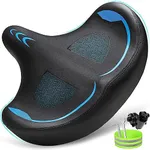Buying Guide for the Best Womens Bike Seats
Choosing the right women's bike seat is essential for comfort, health, and enjoyment while riding. The right seat can help prevent discomfort, numbness, and even injury, especially on longer rides. Since every body is different, it's important to consider your riding style, body shape, and the type of bike you use. Understanding the key features of bike seats will help you make a choice that keeps you comfortable and happy on every ride.WidthWidth refers to how wide the seat is at its widest point, usually measured at the back where your sit bones rest. This is important because a seat that's too narrow can cause pressure and discomfort, while one that's too wide can lead to chafing. Women's bike seats are often wider than men's to better support wider sit bones. To pick the right width, consider your body shape and try to match the seat width to the distance between your sit bones. If you mostly ride upright, a wider seat may be more comfortable, while a narrower seat is better for more aggressive, forward-leaning positions.
PaddingPadding is the soft material on top of the seat that provides cushioning. More padding can feel comfortable at first, but too much can actually cause discomfort on longer rides by creating pressure points. Less padding is often preferred by experienced riders or those who ride longer distances, as it allows for better support. If you ride short distances or casually, a seat with more padding might be suitable. For longer or more intense rides, look for a seat with firmer, thinner padding.
ShapeThe shape of the seat includes its overall profile, length, and whether it has a flat or curved surface. Some seats are flat, while others are more contoured to fit the body. A flatter seat allows for more movement, which can be good for active riding, while a more contoured seat can provide extra support for casual or upright riding. Consider your riding style: if you move around a lot on the bike, a flatter seat may be better; if you stay in one position, a contoured seat might offer more comfort.
Cutouts and ChannelsMany women's bike seats have a cutout or channel down the middle to relieve pressure on sensitive areas and improve airflow. This feature is especially important for longer rides or if you experience numbness or discomfort. If you have had issues with pressure or numbness in the past, look for a seat with a central cutout or groove. If you haven't had these issues, a solid seat may still work for you.
Cover MaterialThe cover material is what you feel when you sit on the seat. Common materials include synthetic leather, real leather, or fabric. Synthetic covers are durable and weather-resistant, making them good for all-weather riders. Leather can mold to your shape over time and is very comfortable, but it requires more care. Fabric covers can offer extra grip but may not be as durable. Choose a cover material based on your riding conditions and how much maintenance you're willing to do.
RailsRails are the metal bars under the seat that attach it to the bike. They can be made from steel, alloy, or even carbon fiber. Steel rails are strong and affordable but heavier, while alloy and carbon rails are lighter and can absorb more road vibrations. If you want a lighter bike or ride on rough roads, consider lighter or more shock-absorbing rails. For casual riding, standard steel rails are usually sufficient.
